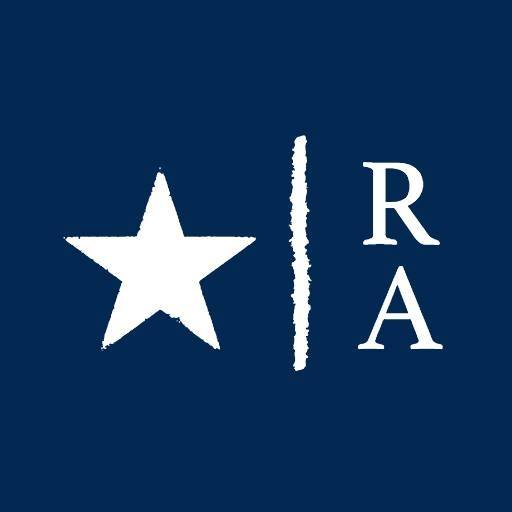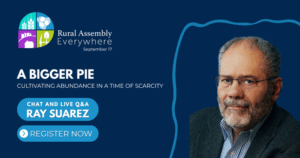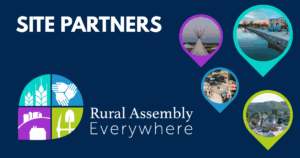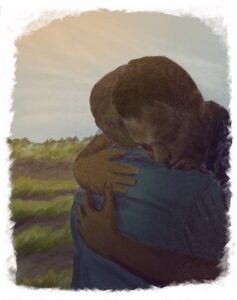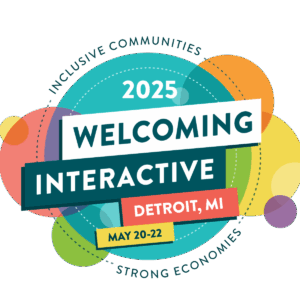Video: Anita Holsapple reads from her reflection on the Rural Women’s Summit.
“War,” says Anita Sugimura Holsapple, “ has touched my home my whole life.”
Holsapple is a filmmaker, a resident of rural Louisiana, and a former military child who has lived on military bases in the U.S. and internationally. Her father served in combat; her mother is a survivor of the Nagasaki atomic bombing.
Her film, “ Battlefield: Home — Breaking the Silence” explores the impact of war on her family and others, particularly those living in rural America.
“It was very important for me to address the needs and the issues that are affecting our combat vets and their families in rural America,” she said. “Because they are forgotten.”
With the film, she’s traveled to rural communities around the country to educate and increase awareness of the “battle at home” for many veterans and family members. Among veterans, those in rural places face the greatest challenges, such as access to care.
From her town of Lafayette, Louisiana, for example, the drive to the closest Veterans Affairs hospital is nearly three hours away in New Orleans. 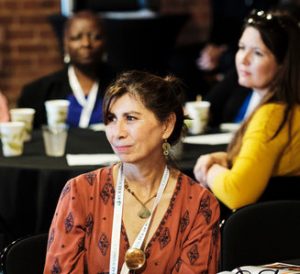
“If you are in Los Angeles, it’s easy to get transportation to the VA,” she said. “But when you’ve got somebody who’s in a population of 1,000, it’s not like you can call an Uber driver and say, “Hey, come get me and take me three hours to the VA.”
Holsapple moved from Los Angeles to Lafayette a few years ago following her father’s death. She treasures the time she now has with her mother, but life as an Asian-American filmmaker in rural Louisiana has been difficult. She is blunt about her frustration with the racism she has experienced. She’s found some community among others who feel marginalized in their rural towns.
After attending the Rural Women’s Summit, Holsapple reflected on the common ground she found there with other rural women.
“We are not always given choices in where we land, such was the case for me,” she wrote after the Summit. “However we do have a choice on how we invest in ourselves and our neighbors. We have great power to make a difference wherever we are. We do not need permission, we just need to act. It is taking that fire within and igniting it into action.”
Q: Describe your connection to Rural America
A: Rural America has always been a part of my life, just never for extended periods of time. My locations, whether in Tennessee, Virginia or Browning, Montana, had been determined either through the courtesy of my USMC father or my professional life — choices based predominately on life factors, not conscience decisions for change. Despite having spent much time in various rural communities, my current situation to reside in the small town of Lafayette, Louisiana was a decision based on the needs of my terminally ill father and aging mother. Although we had no familial connection to Lafayette, my dad chose this location after retiring from military service, a decision that was always socially and emotionally challenging for my Japanese mother.
Q: Tell us about a moment when you felt discouraged and how you overcame it.
A: Leaving the comfort and security of friends, colleagues and my home in Los Angeles was a life-changing decision, but a necessary one. Many a day there is great frustration and sadness due to the lack of community and resources.
As a documentary filmmaker, our work is already fairly isolating, but when combined in an area that is extremely insular, the ability to “fit-in” is very challenging and not always welcomed, and especially difficult when one is older and not from the region.
During post production for my documentary, I made multiple attempts to fit in with the filmmaking communities. Being an L.A. transplant, it seemed like a natural way to establish relationships and meet new colleagues, but instead I found that the cliques were very tight and not always welcoming to “outsiders,” and especially ones who did not fit into their “binary” categories.
Unless our “face,” whether Asian, Latina, Middle Eastern, Native, etc., could assist them in elevating their needs, we seemingly served no purpose or presented no value, despite our accomplishments and achievements. We were invisible unless “they” perceived us as “useful.” This was very distressing on many levels. While it did not apply to everyone, it certainly represented a majority of those I encountered.
As a daughter of an immigrant who was raised abroad, and in major metropolitan cities around the U.S., this notion was completely foreign to me. Never had I faced such racism or overt prejudices until arriving in Louisiana. It was a devastating reality and one I still work through every day.
These days, more often than not, I focus on my work and remain close to my friends back home and abroad, but continue to seek out “community” when possible but find most of my “community,” are often those “just like me,” those too who have been seemingly ostracized, ridiculed or marginalized.
The beauty of filmmaking is that many of us are so used to communicating on various platforms, engaging in borderless conversations devoid of personal judgements, and while I so miss the personal engagements of social activities, the ability to laugh, cry and vent with those that “get you,” is a beautiful and soul-filling respite from the loneliness and isolation of my current circumstances.
Q: What fills your cup these days?
A: It’s hope for a voice, hope for change, hope for inclusion, opportunities and the hope that my Asian brothers and sisters or any marginalized group, are given credence for their presence, abilities and are given equality at the table and the conversation.
Q: Is there a habit or practice you subscribe to that keeps you motivated?
A: Motivation…that’s a tough one on some days. As a caregiver, as well as a filmmaker, I find days where it is next to impossible to feel motivated. Those are the days I take a step back, breathe and try to reframe the roadblocks into something productive and useful…usually this involves cooking which is very therapeutic.
Being the daughter of a combat U.S. Marine, I was raised with the mantra of improvise, adapt and overcome….whenever faced with an seemingly implausible situation, what are the tools in my personal toolbox…what can I do, what is out of my control and what are the best steps to move forward. My dad always said regardless of the situation, just keep moving forward. It’s not the size of the steps, it’s the ability to stay focused and keep a forward momentum and always maintain your GRIT.
Q: What are you reading/listening to?
A: My life is definitely a balancing act, but while working I usually put on some old school tunes or classical. My sunrise/sunset playlist is always meditation music, which helps me ground and appreciate the blessings that surround me. I would love to get into podcasts, which there are many, but the bandwidth of my headspace is limited right now. Currently reading:
- The Subtle Art of Not Giving A F*uck by Mark Manson
- Chaplin by Charles Chapin
- Call Sign Chaos by Jim Mattis, Gen. USMC (Ret)
- Waging Peace by my dear sister in arms: Rural Women’s Summit powerhouse, Diana Oestreich, U.S. Army
- Women Who Run With the Wolves by Clarissa Pinkola Estes
